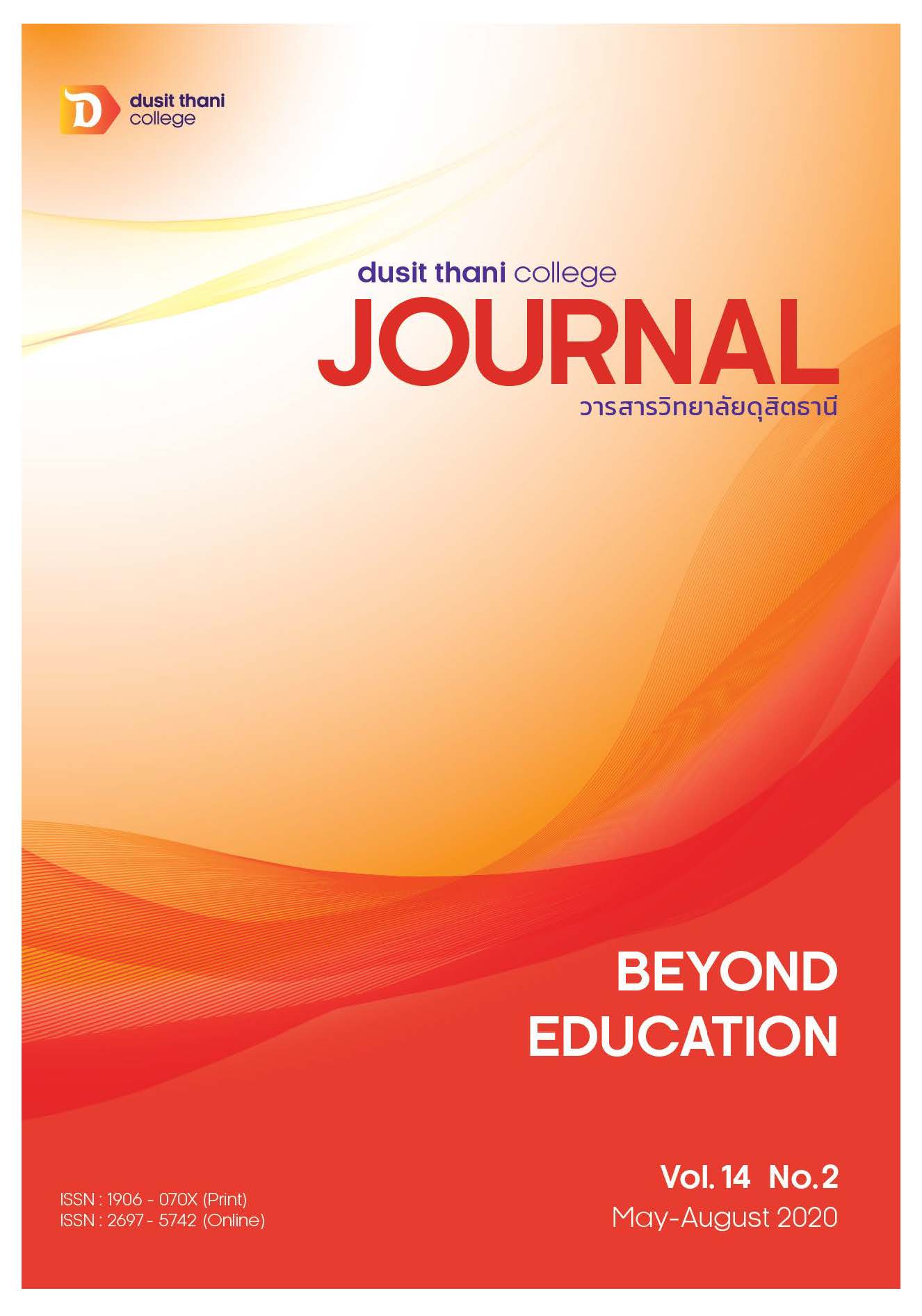Tourism Development Strategy for Effectiveness Expanding Chinese Outbound Tourism Market: A Case Study of Lanna Culture Tourism Development Region
Main Article Content
Abstract
The objective of this research was to determine tourism development strategies for effectively extending tourism marketing of Chinese tourists: case study of the tourism development of Lanna civilization area from synthesizing information from three subprojects as follows: 1) Approaches for Printed Media Development to Accomplish Social Rule and Cultural Understanding in Lanna Culture for Chinese Tourists: Case Study - Lanna Culture Tourism, 2) Tourism Development Strategy for Effectiveness Expanding Chinese Outbound Tourism Market: Case Study-Culture Tourism Development Region, and 3) Tourism Marketing Strategy for Chinese Tourists: Case Study - Lanna Culture Tourism Development Region, conducting the SWOT Analysis of tourism development, and applying the two-sided natural mechanism based on Edward De Bano’s thinking Method indicating that there were two sides of every coin, which meant weaknesses could turn to strengths (W"S) and threats could turn to opportunities (T"O). Consequently, only strengths and opportunities (SO) remained, and helped business establish “The Golden Minute Stage” strategy.
It was generally known that strategy is planning ahead to the step beyond others. Strategy also indicates vision generating value creation. All information mentioned above led to the tourism development strategy for effectively extending the tourism marketing of Chinese tourists or called HOST, which means a good host as details follow;
H - Hospitality meant creating the impression to Chinese tourists by providing them with service mind “They do not know. How to help them get a better understanding?”
O - Old Culture meant maintaining the Lanna civilization by learning about the culture through places, foods and the way of life and creating the common understanding with Chinese tourists by providing them for a better knowing and understanding towards the old culture then they may tell others.
S - Sustainable meant many tourism activities moved by communities. Therefore, communities had earned from tourists in traditional performances and souvenirs, which means Consequently, the culture was a selling point for Chinese tourist groups.
T - Teammate meant the collaboration among government agencies, private sector, educational institutions and communities, including the participation of Chinese tourists who joined in the creative travelling and did not destroy the old cultures. The mentioned collaborations led to a sustainable tourism.
Article Details
Article Screening Policy
- All research and academic articles to be published must be considered and screened by three peer reviews in the relevant field / article.
- All articles, texts, illustrations and tables published in the journal are the personal opinions of the authors. Editors don't always have to agree. And no responsibility whatsoever is the sole responsibility of the author.
- The articles to be published must never be published. Where did you first publish? And not in the consideration of other journals If the audit found that there has been a duplicate publication It is the sole responsibility of the author.
- Any article that the reader sees as being plagiarized or impersonated without reference. Or mislead the work of the author Please let the journal editor know it will be your greatest blessing.
References
Chalalai Rattanachaichaowanon (2011). Study of attitudes and public relations media that affect motivation in Admission to Phetchabun Rajabhat .University Journal of Research and Development Institute Phetchabun Rajabhat University 13 (2).
Delve into the Silk Road R3A (End). Caravan Tour Hit. China Talak Chieng Mai-Chieng Rai. (2015). Bangkok: Prachachat.
Get proactive in Chinese tourists. (2015). Bangkok: Daily Manager.
Gilson, L. 2014. Qualitative research synthesis for health policy analysis: what does it entail and what does it offer? Health Policy and Planning 2014; 29:iii1-iii5
Joann Marsili. (2015). The 13 P's of Marketing, from https://www.linkedin.com/pulse/
13-ps-marketing-joann-marsili.
Kasikornresearch. (2015). Chinese New Year Festival: Encourage Chinese to visit Thailand during the first quarter 2015. Bangkok:
Kongphop Pusuwan. (2014). Proactive adjustment to wake up the arrest of
Chinese tourists. Bank of country Thai FAQ Focused AND Quick. 89.
Kotler & Keller. (2012). Marketing Management. London: Pearson Education.
Kornwan Sangkhakorn, Chakri Techajawari and Kanchana Jiratrat. (2013). Chinese tourist
behavior in Chiang mai. Chiang mai: Chiang mai University.
Marketing 4.0 “the era of marketing evolution for all”. (2016). Bangkok: Bangkokbiznews.
Ministy of Tourism and Sports. (2015). Thai Tourism Strategy 2015-2017. Bangkok:
Pornthip Thawiphong and Pluemjai Phaichit. (2014). Srivichai Cultural Tourism Media Toward Attitude Of Thai tourists Journal of Management Science Suratthani Rajabhat University 1 (2).
Puntatong, Apiwat. Phirasant, Jirawat. and Soodsang, Nirat. (2012). Particpatory development of printing for the communities around Sukhothai Historical Park. Journal of Art Architecture Naresuan University. 3(1).
Supakthaworn Nitikun. (2014). Study of guidelines for media development of the Faculty of Agriculture. Kamphaeng Saen, Kasetsart University Kamphaeng Saen Campus Veridian Academic Journal E-Journal. 7 (2).
TAT Intelligence Center. (2013) Summary of poll results about how to deal with the tsunami of Chinese-Russian tourists. TAT Review Magazine, Quarter 4/2013, October-December.
Tawornnitikul, Supak. (2014). A study of guidelines for public relations at Kamphaeng Saen Kasetsart University Kamphaeng Saen. Academic Journal Veridian E-Journal. 7(2)
Tourism Development Board for the Lanna Civilization Tourism Development Zone. (2015). Tourism development action plan within the Lanna civilization tourism development zone (2016-2020). Bangkok:
Tour of the Russian coin-currency center Negative factors for tourism “Pattaya”. (2015). Bangkok: Kom Chad Luek.


